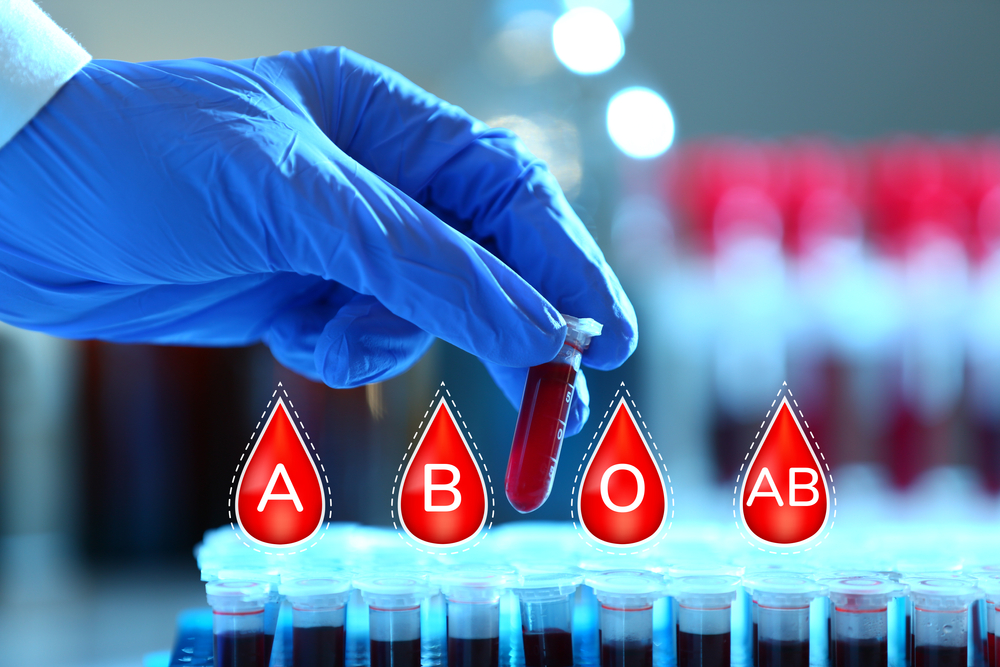That seemingly arbitrary letter you rarely think about could be silently influencing your health in surprising ways. Your blood type, determined before birth and unchanged throughout life, extends far beyond its role in blood transfusions and represents a fascinating intersection of genetics, immunity, and disease vulnerability. Research over the past decade has revealed increasingly compelling connections between ABO blood groups and varying risks for conditions ranging from heart disease to certain cancers, with some blood types offering protection against specific illnesses while increasing susceptibility to others.
These associations aren’t simply statistical curiosities but reflect fundamental biological interactions between blood type molecules expressed throughout your body and various disease processes. Understanding these connections doesn’t provide definitive health predictions but offers intriguing insights into personal risk profiles that might eventually inform more individualized prevention strategies and medical care approaches. While you can’t change your blood type, knowing its potential health implications might help you make more informed lifestyle choices and enhance your awareness of specific risks worth monitoring.
Why blood type influences more than just transfusions
Blood type’s influence extends far beyond compatibility for blood donations, affecting the body through multiple biological mechanisms that intersect with various disease processes.
ABO blood group molecules appear throughout your body, not just on red blood cells. These carbohydrate structures exist on the surface of many tissue types, including the lining of blood vessels, digestive organs, respiratory passages, and even neurons. This widespread distribution means blood type antigens interact with numerous biological processes beyond the bloodstream, creating potential pathways for influencing disease development in multiple organ systems. The presence of these molecules in various tissues helps explain why blood type correlations extend to conditions seemingly unrelated to blood itself.
The blood type gene influences more than just the A and B antigens, simultaneously affecting levels of certain clotting factors and inflammatory compounds in the bloodstream. People with non-O blood types typically have approximately 25-30% higher levels of von Willebrand factor and Factor VIII, two proteins crucial for blood clotting. These elevated levels partially explain the increased cardiovascular and thrombosis risks observed in individuals with A, B, and AB blood types compared to those with type O, revealing how single genes can have multiple effects beyond their most obvious function.
Blood type antigens function as binding sites for various pathogens, creating differing susceptibility patterns to certain infections. Many bacteria, viruses, and parasites have evolved to use specific blood group molecules as attachment points to gain entry into cells. Different blood types essentially present different “lock” configurations, determining which pathogenic “keys” can successfully bind. This mechanism helps explain why certain blood types show higher or lower vulnerability to specific infectious diseases, from norovirus to malaria, with the ancient evolutionary battle between humans and pathogens playing out partly through blood type diversity.
Immune system functioning varies subtly between blood types due to differences in antibody production and inflammatory responses. People naturally produce antibodies against the blood type antigens they lack, creating variations in immune reactivity. Type O individuals, for instance, produce both anti-A and anti-B antibodies, potentially creating broader immune surveillance. Additionally, research suggests blood type influences inflammatory pathway activation, with some types showing stronger responses to certain triggers. These immune variations likely contribute to observed differences in autoimmune disease prevalence and inflammatory condition risks across blood groups.
Gut microbiome composition shows notable variations associated with blood type, potentially influencing disease susceptibility through this increasingly recognized health determinant. Research indicates blood type antigens affect which bacterial species thrive in the digestive tract, as certain microbes preferentially interact with specific blood group molecules present in the intestinal lining and secretions. These microbiome differences potentially influence metabolism, immune function, and inflammation, providing another pathway through which blood type may indirectly affect disease vulnerability throughout the body.
The evolutionary persistence of different blood types suggests balanced advantages rather than any single “best” type. The worldwide distribution of blood types, with varying frequencies across populations, indicates that different types likely offered survival advantages in different historical environments and against different threats. This evolutionary perspective helps explain why each blood type appears associated with both increased and decreased risks for various conditions, representing complex trade-offs rather than simply “good” or “bad” genetic variations.
The cardiovascular connection with strongest evidence
The relationship between blood type and cardiovascular disease represents one of the most thoroughly documented blood group health associations, supported by multiple large studies and clear biological mechanisms.
Heart attack risk shows consistent patterns across blood types, with individuals having type O blood enjoying approximately 10-15% lower risk compared to other types, according to multiple large epidemiological studies. Type A, B, and AB individuals all show moderately increased vulnerability to coronary events, though the precise percentages vary somewhat across different population studies. These associations remain significant even after accounting for traditional cardiovascular risk factors like cholesterol, blood pressure, and smoking, suggesting blood type represents an independent risk contributor.
Venous thrombosis, including deep vein thrombosis and pulmonary embolism, shows even stronger blood type correlations than arterial disease. Non-O blood type individuals experience approximately 60-80% higher risk for these dangerous blood clots compared to type O individuals. This substantial difference becomes particularly relevant during high-risk periods like pregnancy, prolonged immobility, or after surgery. The considerably larger effect size for venous versus arterial clotting likely reflects the differing pathological processes involved, with venous clots more directly influenced by the clotting factor variations associated with blood type.
Bleeding risk presents the flip side of the clotting relationship, with type O individuals experiencing slightly higher rates of certain bleeding disorders and complications. The same lower levels of clotting factors that provide type O protection against thrombosis simultaneously create approximately 10-15% higher vulnerability to excessive bleeding, particularly during surgery, childbirth, or with menstruation. This illustrates the evolutionary trade-offs inherent in blood type variations, with advantages in one health domain often balanced by disadvantages in another.
Stroke susceptibility varies by stroke type and blood group, with evidence suggesting non-O blood types face approximately 10-20% higher risk for ischemic strokes caused by blood clots. However, for hemorrhagic strokes caused by bleeding, type O individuals may face slightly elevated risk. This pattern perfectly exemplifies the clotting-bleeding trade-off associated with blood type, with each type offering relative protection against one stroke category while potentially increasing vulnerability to the other.
The biological mechanism underlying these cardiovascular associations has been extensively studied, with differences in von Willebrand factor and Factor VIII levels consistently demonstrated across blood types. These clotting proteins remain approximately 25-30% higher in non-O individuals compared to type O individuals, creating a more thrombotic baseline state. This well-established mechanism provides biological plausibility that strengthens the epidemiological associations observed in population studies, making the cardiovascular-blood type connection particularly compelling.
The clinical relevance of these associations continues to evolve, with some medical centers beginning to incorporate blood type into comprehensive cardiovascular risk assessments. While not yet standard practice, blood type information could potentially influence decisions about prophylactic measures like aspirin therapy or guide the intensity of other risk factor management. The relatively fixed nature of traditional cardiovascular risk calculators might eventually expand to include blood type as an additional variable, allowing more personalized risk stratification.
The cancer connections still being unraveled
Research examining blood type associations with cancer risk has revealed intriguing patterns, though with generally smaller effect sizes and more variation across populations than the cardiovascular associations.
Pancreatic cancer shows one of the strongest and most consistent cancer-blood type relationships, with type A individuals facing approximately 20% higher risk compared to type O, while type B and AB individuals show intermediate risk elevations. This association, initially identified in genome-wide association studies, has been replicated across diverse populations and appears independent of other known pancreatic cancer risk factors. The substantial mortality of this particular cancer makes even moderate risk variations potentially significant from a public health perspective.
Gastric cancer risk correlates with blood type in populations with high disease prevalence, particularly in East Asian countries where this cancer remains more common. Type A individuals face approximately 10-20% higher risk compared to type O in these populations. The mechanism likely involves interaction between blood type antigens expressed in the stomach lining and Helicobacter pylori, the bacterium responsible for most gastric cancer cases. Different blood types appear to influence how this pathogen binds to and damages stomach tissues, potentially explaining the risk variation.
Skin cancer shows more complex blood type associations that vary by cancer subtype and sometimes by study population. Some research suggests type O individuals may face slightly elevated melanoma risk, while non-melanoma skin cancers show less consistent patterns. These associations generally show smaller effect sizes than other cancer-blood type relationships, typically in the 5-15% risk variation range, and appear influenced by geographic and genetic factors beyond blood type alone.
The biological mechanisms connecting blood types to cancer risk remain under investigation but include several plausible pathways. Blood group antigens can affect cell adhesion properties, potentially influencing tumor cell behavior and metastatic potential. Additionally, variations in inflammatory responses and immune surveillance associated with different blood types might affect how effectively the body identifies and eliminates precancerous cells. The presence of blood group antigens on cancer cells themselves might also influence how these cells interact with their surrounding environment and the immune system.
The practical implications of cancer-blood type associations remain primarily in the research domain rather than affecting clinical care. The moderate effect sizes, typically smaller than those for cardiovascular associations, generally don’t justify blood type-specific screening protocols with current evidence. However, as precision medicine advances, blood type might eventually factor into more comprehensive cancer risk algorithms that guide screening frequency or intensity for certain individuals.
Population differences in cancer-blood type associations highlight the complexity of these relationships. The strength and sometimes even the direction of associations can vary across ethnic groups, likely reflecting different genetic backgrounds, environmental exposures, and lifestyle factors that interact with blood type. This variation emphasizes that blood type represents just one factor within a complex web of cancer risk determinants rather than a dominant influence in isolation.
The infectious disease susceptibility differences
Blood types create varying susceptibility profiles for certain infectious diseases through mechanisms involving pathogen attachment, immune responses, and inflammatory pathways.
Norovirus, the notorious cause of severe gastrointestinal illness on cruise ships and in other confined settings, shows one of the clearest blood type vulnerability patterns. People with type B blood have approximately 50% lower risk of infection compared to other types, as this highly contagious virus uses blood group antigens to attach to intestinal cells. The specific carbohydrate structure of the B antigen appears less favorable for viral binding, creating natural resistance that helps explain why norovirus outbreaks often affect large portions of exposed populations but not everyone.
Malaria susceptibility varies by blood type, with type O individuals facing approximately 20-40% higher risk for severe disease when infected with the Plasmodium falciparum parasite compared to type A individuals. This pattern, most strongly documented in areas with endemic malaria, likely reflects differences in how infected red blood cells bind to blood vessel walls based on their surface antigens. The same type O blood that provides cardiovascular benefits in modern environments may have created malaria vulnerability in regions where this parasitic disease dominated the disease landscape, illustrating how blood type advantages shift across different environments.
COVID-19 severity gained attention early in the pandemic when preliminary studies suggested potential blood type associations. Subsequent larger research has provided more nuanced evidence indicating type A individuals may face approximately 10-20% higher risk for severe COVID-19 outcomes compared to type O, with type B showing intermediate risk. These associations appear modest compared to other COVID-19 risk factors and show some variation across populations, but the biological plausibility involves differences in viral binding, clotting tendencies, and inflammatory responses associated with different blood types.
E. coli infection risk varies by blood type due to differences in how certain bacterial strains bind to urinary and intestinal tract tissues. Type B individuals appear to have approximately 20-35% lower risk for certain urinary tract infections caused by specific E. coli strains compared to type A or O individuals. The bacteria preferentially bind to A and O antigens expressed in the urinary tract, creating a molecular basis for the observed susceptibility differences that align with clinical infection patterns.
H. pylori, the stomach bacterium linked to ulcers and gastric cancer, shows blood type-specific binding patterns that influence infection outcomes. Type O individuals appear more vulnerable to strains causing duodenal ulcers, while type A individuals show higher risk for strains associated with gastric cancer. These differing vulnerability profiles help explain the complex relationship between blood type, H. pylori infection, and the different disease outcomes this bacterium can cause depending on how it interacts with host tissues.
The evolutionary pressure from infectious diseases likely helped maintain blood type diversity in human populations, as different types provided selective advantages against different pathogens. The varying worldwide distribution of blood types, with type O predominating in some regions while A or B show higher frequency in others, likely reflects the historical disease landscape in different geographical areas. This distribution pattern supports the theory that no single blood type offers universal protection, but rather each provides a unique profile of susceptibilities and resistances shaped by regional pathogen exposure throughout human evolution.
The practical takeaways for personal health
Understanding your blood type’s potential health implications provides context for personalized risk awareness without creating cause for excessive concern or dramatic lifestyle changes.
Cardiovascular risk awareness becomes particularly relevant for individuals with non-O blood types, especially those with type A or AB blood who show the strongest associations with clotting-related conditions. For these individuals, heightened attention to traditional heart disease risk factors like blood pressure, cholesterol, and physical activity becomes even more important. The blood type association essentially adds another layer to existing risk assessment, potentially motivating stronger adherence to heart-healthy behaviors for those already at elevated risk based on their blood group.
Clotting risk vigilance during high-risk periods merits special attention for non-O individuals. Being aware of increased thrombosis vulnerability becomes particularly important during prolonged immobility, like long flights or bed rest, after surgery, during pregnancy, or when using hormonal medications. Simple preventive measures like staying hydrated, moving regularly during flights, and discussing clotting risk with healthcare providers before surgery or starting hormonal treatments take on added importance for those with A, B, or AB blood types.
Cancer screening adherence remains important regardless of blood type, as the moderate risk variations associated with blood groups don’t change fundamental screening recommendations. However, individuals with type A blood might consider being particularly vigilant about pancreatic cancer symptoms like unexplained weight loss, abdominal pain, or jaundice, given their slightly elevated risk. Similarly, those with risk factors for gastric cancer might factor in blood type when discussing screening options with healthcare providers, particularly in regions with high disease prevalence.
Medical history sharing that includes blood type information helps healthcare providers build more comprehensive risk profiles. While many people don’t know their blood type, those who do should include this information in their medical records and discussions with new providers. As precision medicine advances, blood type will likely factor more explicitly into risk algorithms and prevention strategies, making this basic genetic information increasingly relevant to personalized care approaches.
Transfusion needs planning becomes more nuanced for those with rarer blood types, particularly AB negative or B negative individuals. These less common types might face greater challenges securing compatible blood in emergency situations, making advance planning for scheduled surgeries particularly important. Knowing your specific type allows for more informed discussions about potential transfusion needs and alternatives in various medical scenarios.
Avoiding overinterpretation remains crucial when considering blood type health associations. The moderate risk variations generally don’t justify major lifestyle modifications based solely on blood type. The associations represent one factor among many influencing health outcomes, with diet, exercise, stress management, and other modifiable factors typically exerting substantially greater effects than the modest risk variations associated with different blood groups.
The perspective that each blood type offers a unique profile of advantages and disadvantages, rather than any type being universally “better” or “worse,” helps place these associations in appropriate context. The very factors that might increase risk in one health domain often decrease it in another, reflecting the complex evolutionary trade-offs that maintained blood type diversity throughout human history. This balanced understanding helps prevent unnecessary anxiety about immutable genetic factors while still acknowledging their subtle influence on personal health landscapes.

















